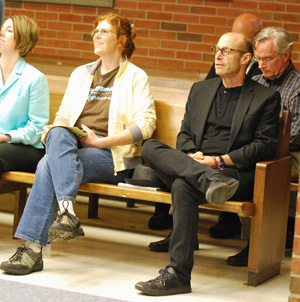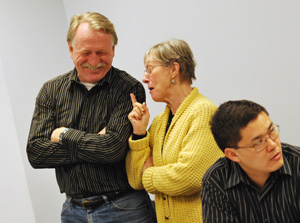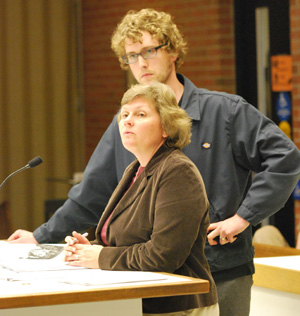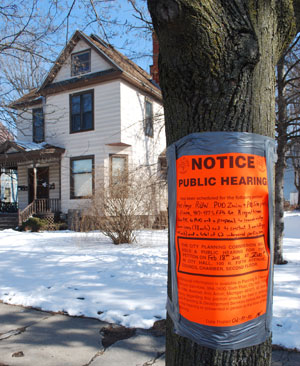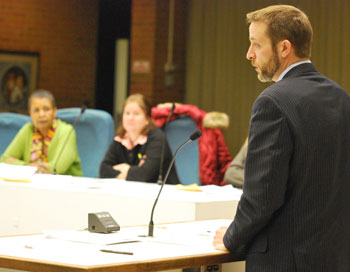S. Fifth Ave: Historic District, Development
On May 17, 2010 the Ann Arbor city council gave final approval to the city’s FY 2011 budget.
Also that same evening, at a different public meeting away from the glitz and glamour of budget deliberations, an historic district study committee – appointed by the council in August 2009 – adopted its final report. The report recommends creation of an historic district along South Fifth and Fourth avenues, from William Street down to Packard Avenue, including the south side of Packard.

The colored overlays indicate existing Ann Arbor historic districts. The question mark indicates the general vicinity of the proposed new historic district. (Image links to .kmz file from the city's data catalog, which will open in GoogleEarth, displaying all the current historic districts in the city.)
The council would still need to approve the creation of the district. The issue is currently scheduled to come before the council for a first reading on June 21, followed by a second reading on July 5. A moratorium on all construction work in the area of the study will expire on Aug. 6.
If the historic district is approved, then the Heritage Row project – a planned unit development (PUD) proposed along the east side of Fifth Avenue south of William Street – would need to win approval not just from the city council, but also from the city’s historic district commission (HDC).
Heritage Row is due to come before the city council for its second reading on June 7. It received its first reading approval from the city council on May 3 – with no discussion, but with one dissenting vote from Mike Anglin (Ward 5).
This article takes a look at the recommendation of the historic district study committee, primarily through the lens of the public hearing held on May 5 in city council chambers. The conclusion of the hearing found Scott Munzel and Alex de Parry kidding back and forth with Beverly Strassmann – over their respective remarks at the public hearing. Munzel and de Parry are legal counsel and developer for the Heritage Row project, respectively, while Strassmann is president of the Germantown Neighborhood Association.
In his public hearing remarks, Munzel had – somewhat unexpectedly – presented a case that the area recommended as an historic district should, if anything, be larger than the study committee is recommending. The issue of the possible district’s size was already controversial at the point when the committee was appointed, and continues to be a bit of a chaffing point among residents. [Full Story]




